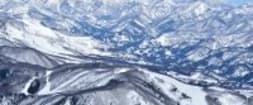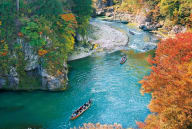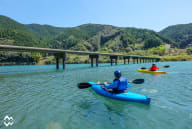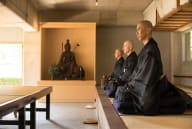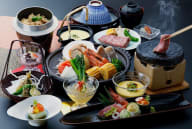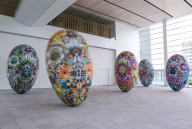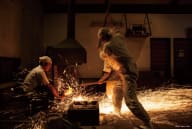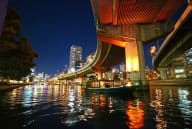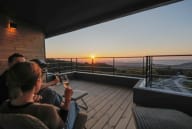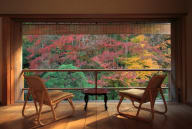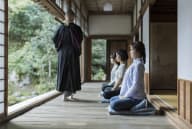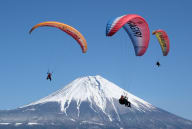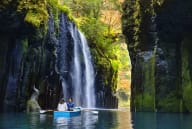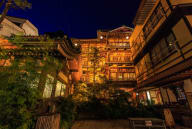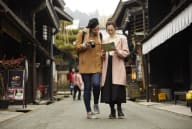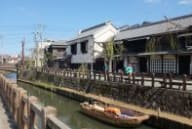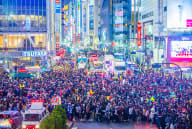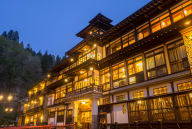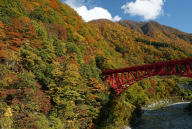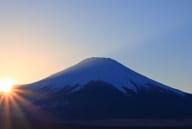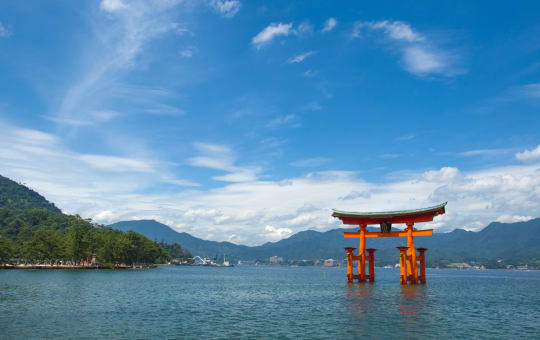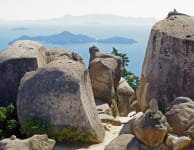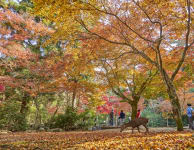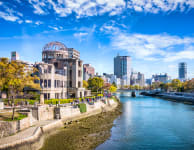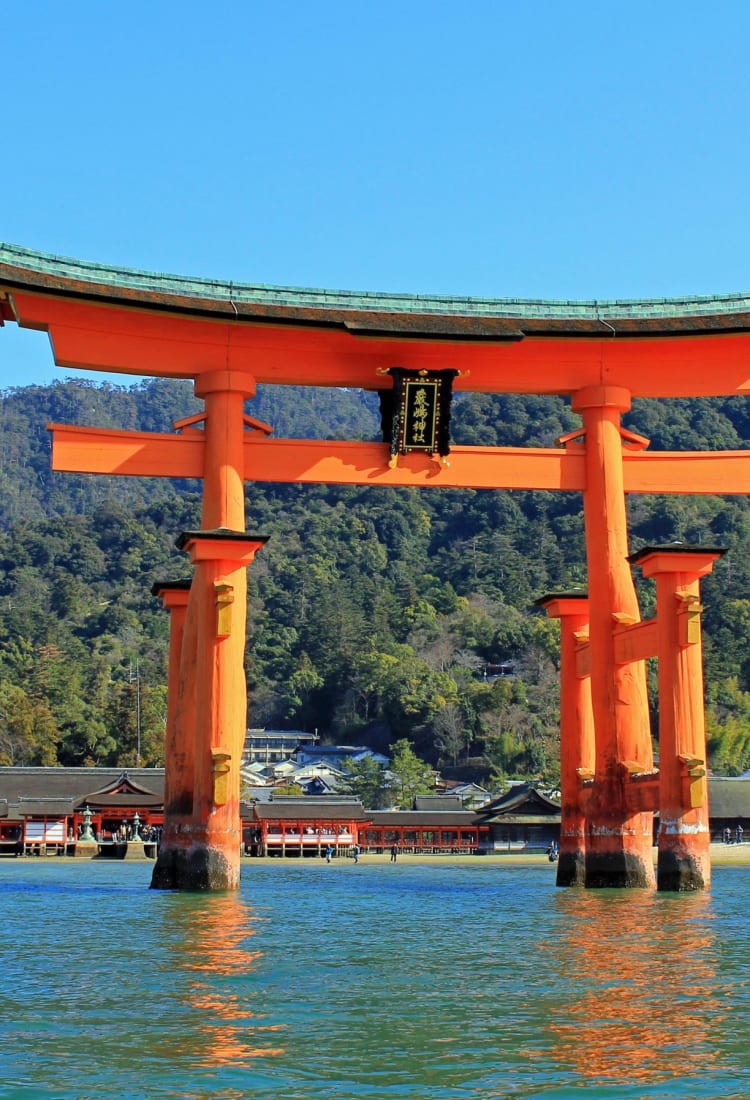

HIROSHIMA Miyajima Setzen Sie mit der Fähre nach Miyajima über – einem der beliebtesten Ausflugsziele in Hiroshima.
Photo copyright: Courtesy of Hiroshima Prefecture
Setzen Sie mit der Fähre nach Miyajima über – einem der beliebtesten Ausflugsziele in Hiroshima.
Heimat des Itsukushima-Schreins, der bei Flut auf dem Wasser zu schwimmen scheint und jedes Jahr Tausende von Menschen anzieht. Dieser Schrein ist einer der meistfotografierten Orte Japans.
Die Insel selbst galt einst als so heilig, dass sie vom Schrein getrennt wurde, damit niemand den heiligen Boden entweihen konnte. Aus diesem Grund befindet sich auch der Eingang zum Schrein, ein riesiges rotes Holztor, vor der Küste.
Nicht verpassen
- Daishoin-Tempel im Herbst, umgeben von herrlicher gelbgolder und roter Herbstlaubfärbung
- Senjokaku, das größte Bauwerk der Insel
- Spaziergang zum großen Torii (Shinto-Tor) bei Ebbe
Anreise nach Miyajima: Verkehrsinformation
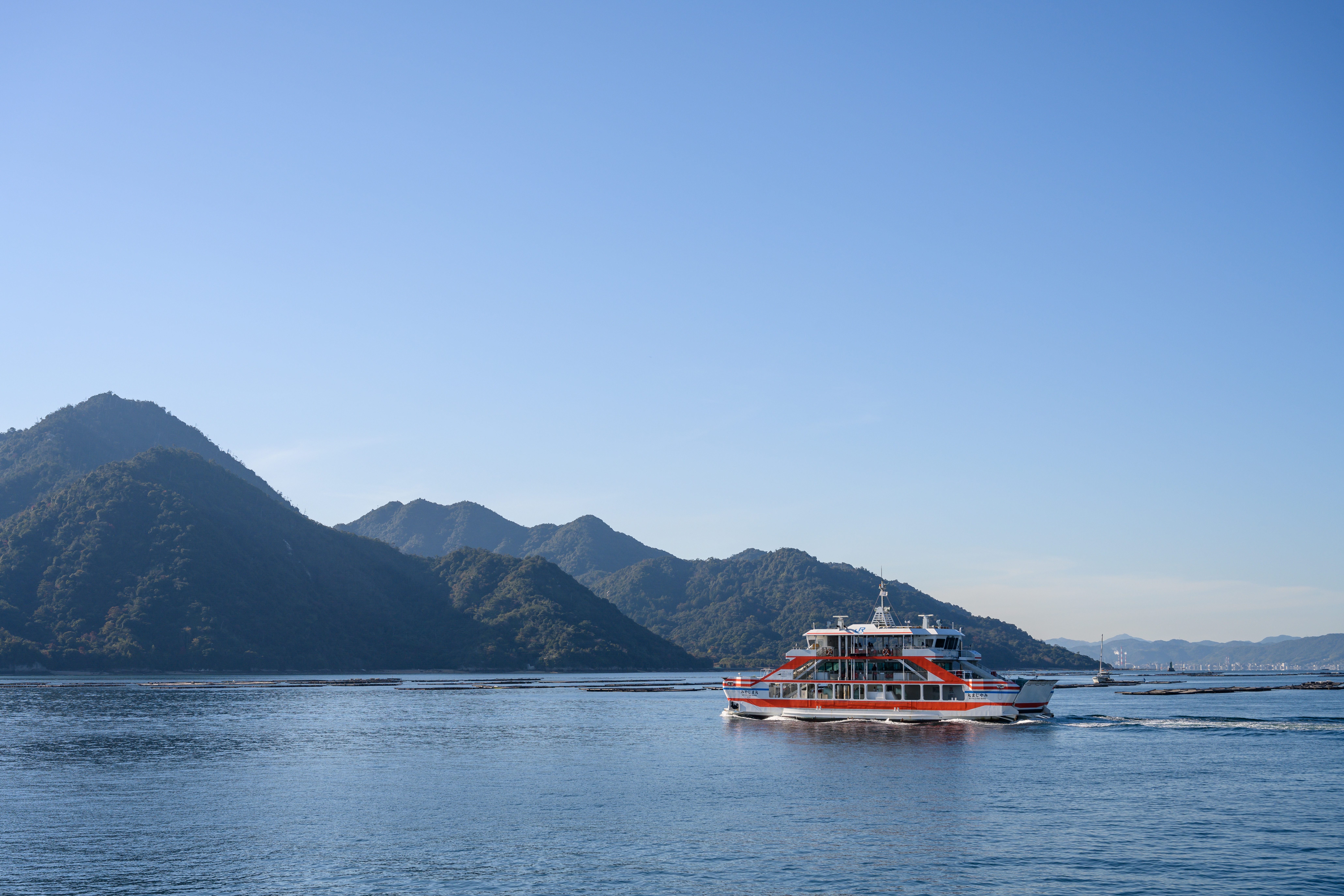
Die Fähre vom Festland bietet einen malerischen Blick auf die Seto-Inlandsee
Zur Insel gelangen Sie mit der Fähre vom Hafen Miyajimaguchi.
Eine ca. 10-minütige Fährfahrt vom Hafen Miyajimaguchi auf dem Festland bringt Sie zur Insel. Der Hafen von Miyajimaguchi befindet sich 10 Fußminuten vom gleichnamigen Bahnhof entfernt. Besteigen Sie die Sanyo-Linie am Bahnhof Hiroshima und steigen am Bahnhof Miyajimaguchi aus, Fahrtdauer etwa 30 Minuten.
Zur Erhaltung der natürlichen Schönheit und der kulturellen Sehenswürdigkeiten von Miyajima ist in den Fährtickets zur Insel eine kleine Besuchersteuer in Höhe von 100 Yen enthalten (gilt sowohl für den Kauf am Fahrkartenautomaten als auch bei Nutzung der automatischen Fahrkartensperren). Die Einnahmen werden für wichtige Dienstleistungen wie den Umweltschutz und die Instandhaltung historischer Stätten verwendet. Ausnahmen gelten für Anwohner, Pendler und kleine Kinder. Weitere Informationen finden Sie auf der offiziellen Website von Miyajima。
Top-Sehenswürdigkeiten und Aktivitäten in Miyajima
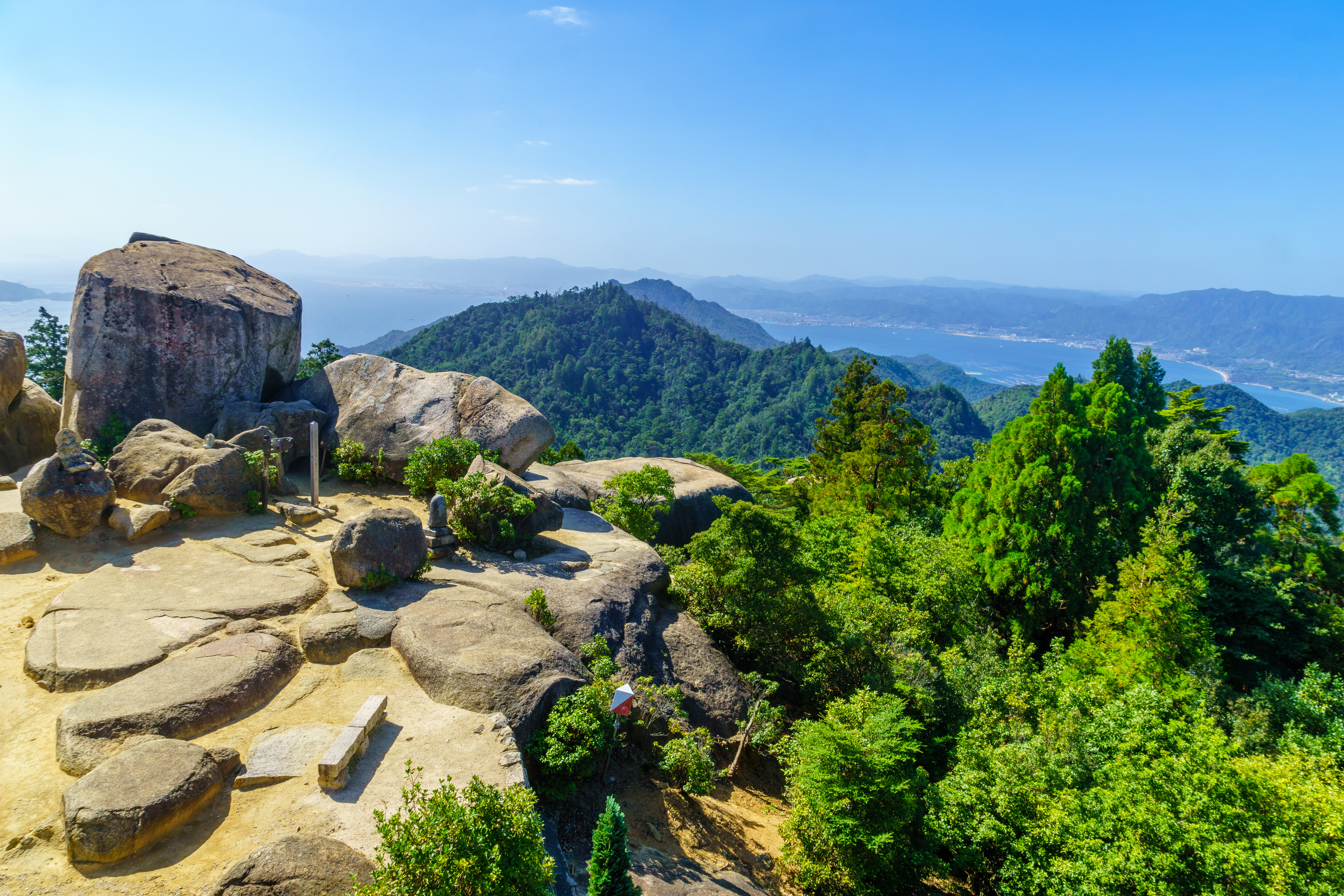
Die Aussicht vom Berg Misen lohnt den anstrengenden Aufstieg
Miyajima hat nur etwa 2.000 Einwohner sowie einige frei lebende Rehe. Der Itsukushima-Schrein und das schwimmende Tor sind von der UNESCO als Weltkulturerbe gelistet. Es befinden sich auf der Insel aber weitere sehenswerte Schreine und Tempel. Nehmen Sie die Seilbahn zum Berg Misen, von wo aus Sie einen atemberaubenden Blick über die Insel und die Bucht genießen können.
Entdecken Sie Miyajimas spirituelle und kulturelle Stätten
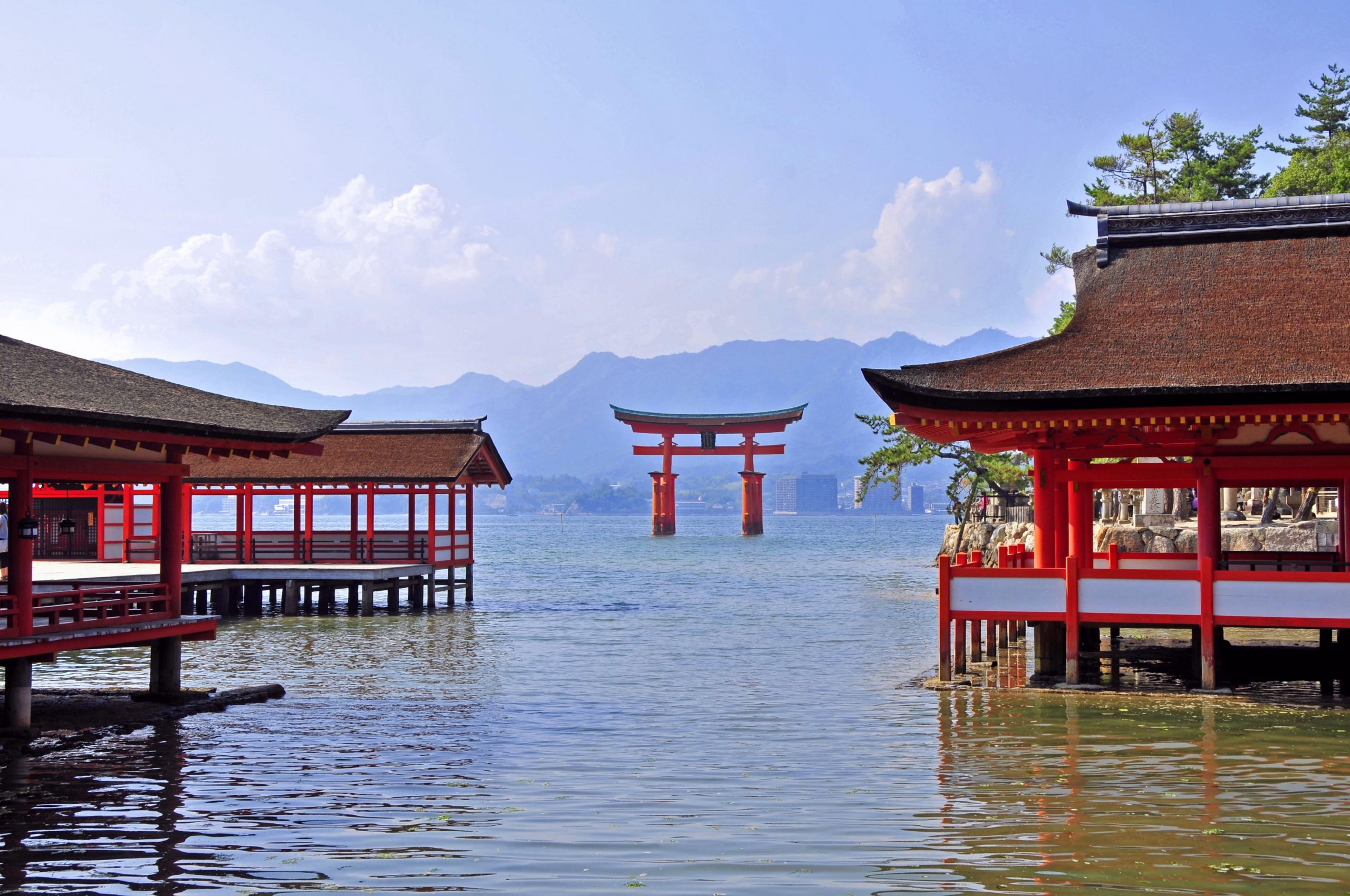
Mit freundlicher Genehmigung der Präfektur Hiroshima
Der Itsukushima-Schrein ist einer der ultimativen Fotospots in Japan
Der Itsukushima-Schrein ist zwar die größte Attraktion der Insel, aber eine Reihe weiterer Schreine und Tempel sind durchaus besuchenswert.
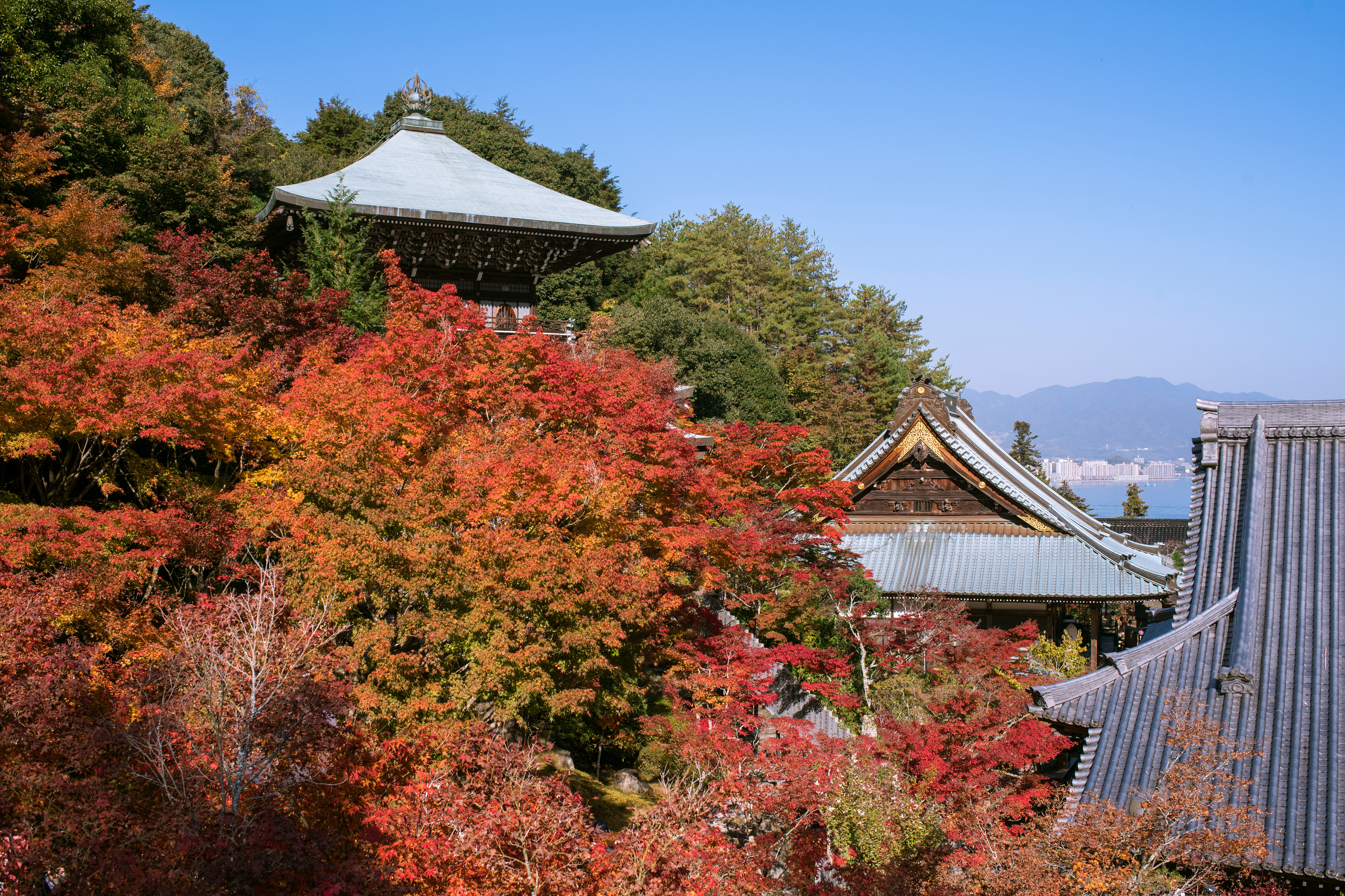
Der Daishoin-Tempel ist zu jeder Jahreszeit fotogen, aber seine Herbstlaubfärbung ist ganz besonders spektakulär
Daishoin-Tempel, der älteste Tempel auf Miyajima, ist umgeben von Ahornbäumen, die sich im Herbst in ein atemberaubend feuerrotes Blättermeer verwandeln.
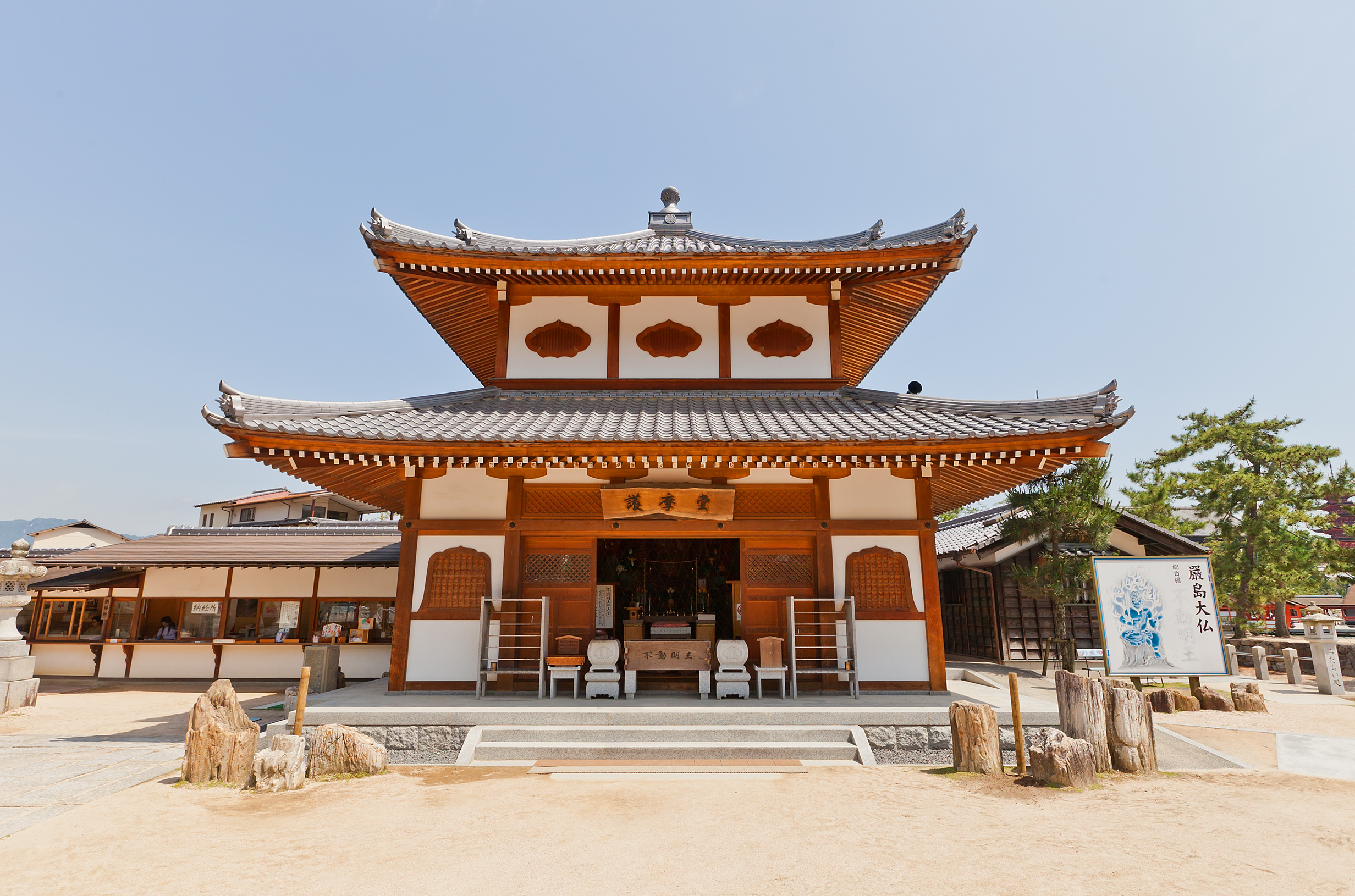
Der Daiganji-Tempel ist ein verehrter spiritueller Ort
Der Daiganji-Tempel direkt neben dem Itsukushima-Schrein ist Benzaiten, der Göttin der Musik, schönen Künste und des Wassers gewidmet. Es soll einer der wichtigsten Tempel in Japan zu ihren Ehren sein.
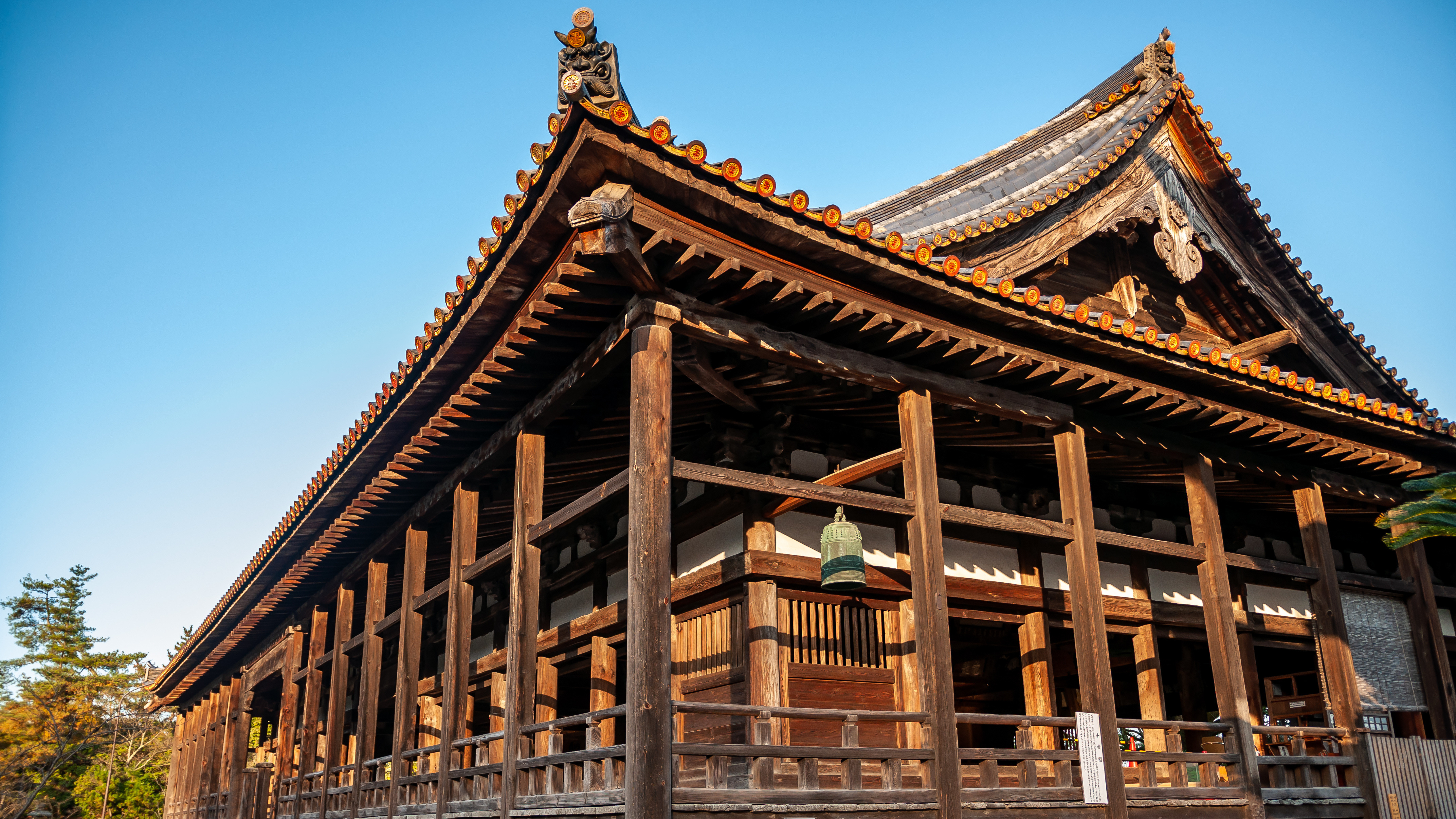
Allein die beeindruckende Größe von Senjokaku und seine aufwendigen Holzschnitzereien sind einen Besuch wert
Das größte Bauwerk auf der Insel ist Senjokaku, was mit „Halle mit 1.000 Matten” übersetzt werden kann. Der mächtige Kriegsherr Toyotomi Hideyoshi beaufsichtigte den Bau, starb jedoch 1598 vor der Fertigstellung. Heute ist es ein wunderschönes, offenes Bauwerk mit atemberaubender Aussicht, das Schutz vor Regen und kühlen Schatten vor der heißen Sommersonne bietet.
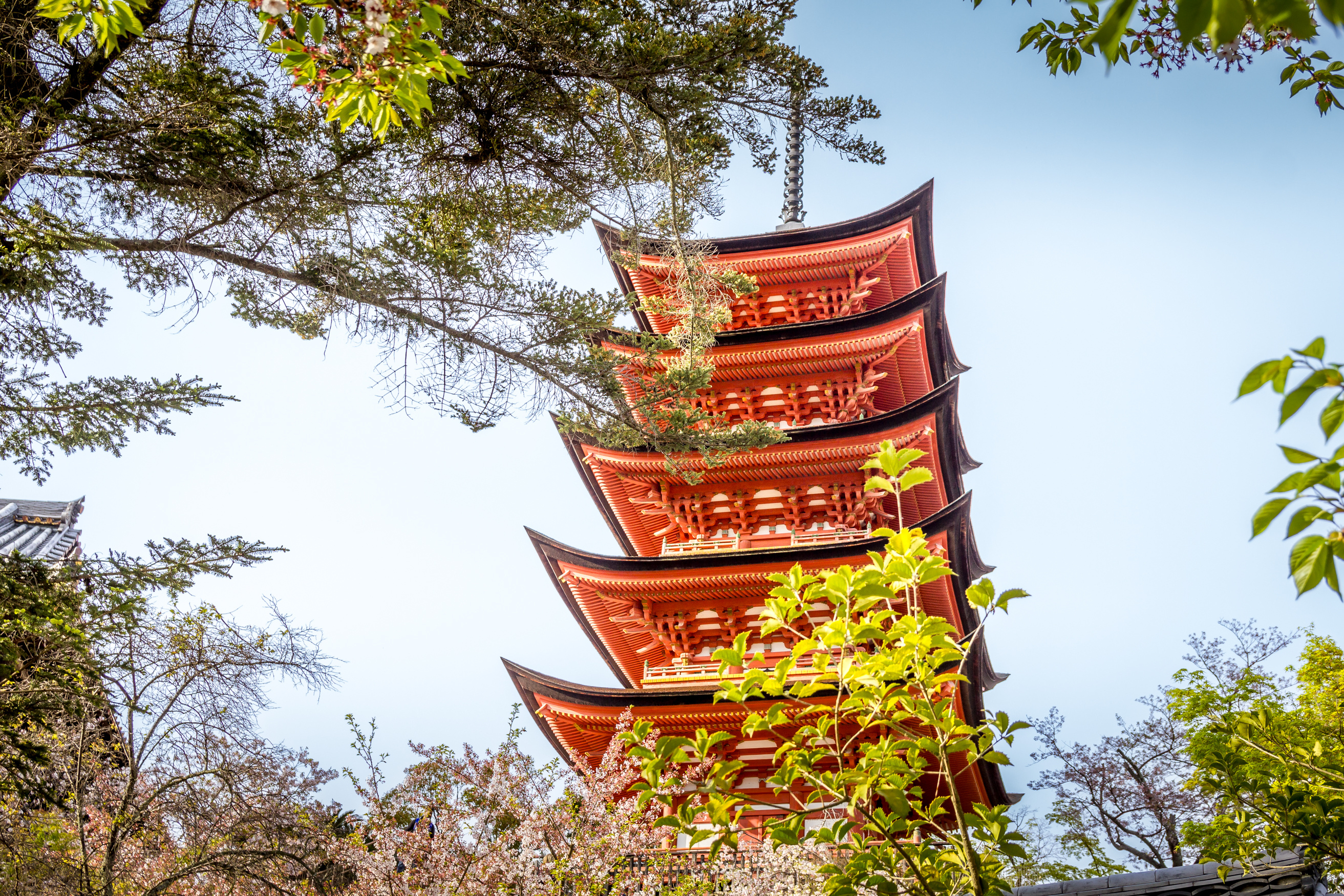
Miyajima mangelt es nicht an fotogenen Orten – auch Gojunoto ist solch ein malerischer Ort
Gojunoto ist eine wunderschöne fünfstöckige rote Pagode, die ursprünglich 1407 erbaut wurde. Ihr leuchtendes Rot bildet einen perfekten Kontrast zum üppigen Grün und dem dahinter liegenden Meer.
Miyajimas künstlerische Seite: Drucke und kunsthandwerkliche Souvenirs
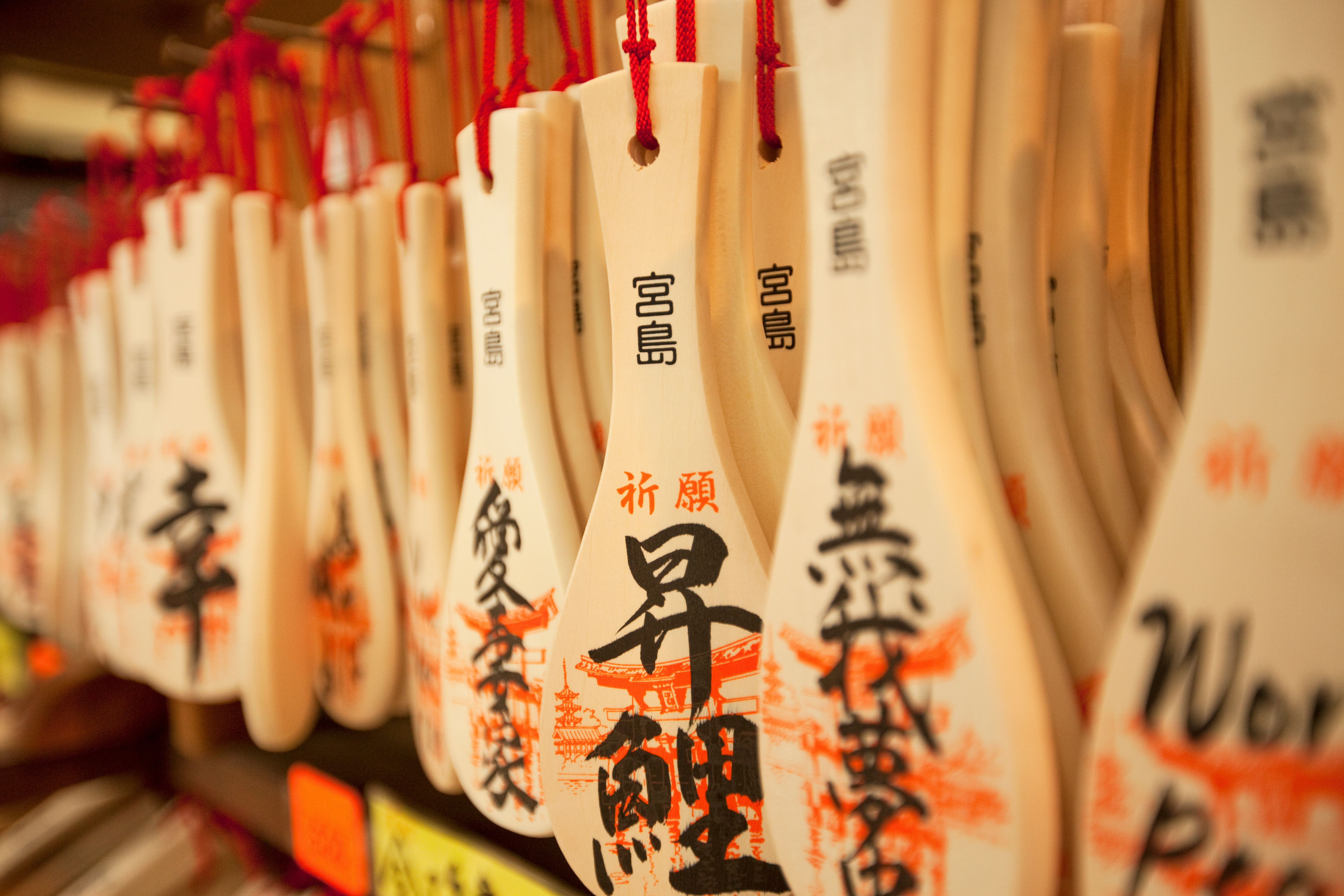
Obwohl eine kleine Insel hat Miyajima die japanische Kunst und Kultur nachhaltig beeinflusst
Der berühmte Holzschnittkünstler Hiroshige schuf mehrere ikonische Drucke der Gegend, auf denen er den Itsukushima-Schrein und das Tor sowohl bei Ebbe als auch bei Flut darstellte. Auch sein Zeitgenosse Kunisada kreierte einige beeindruckende Kunstwerke der Insel.
Miyajima zog während des Baus und der laufenden Reparaturen des Schreins viele Handwerker an und ist heute für seine Holzschnitzereien bekannt. Miyajima-bori eignet sich gut als Souvenir.











